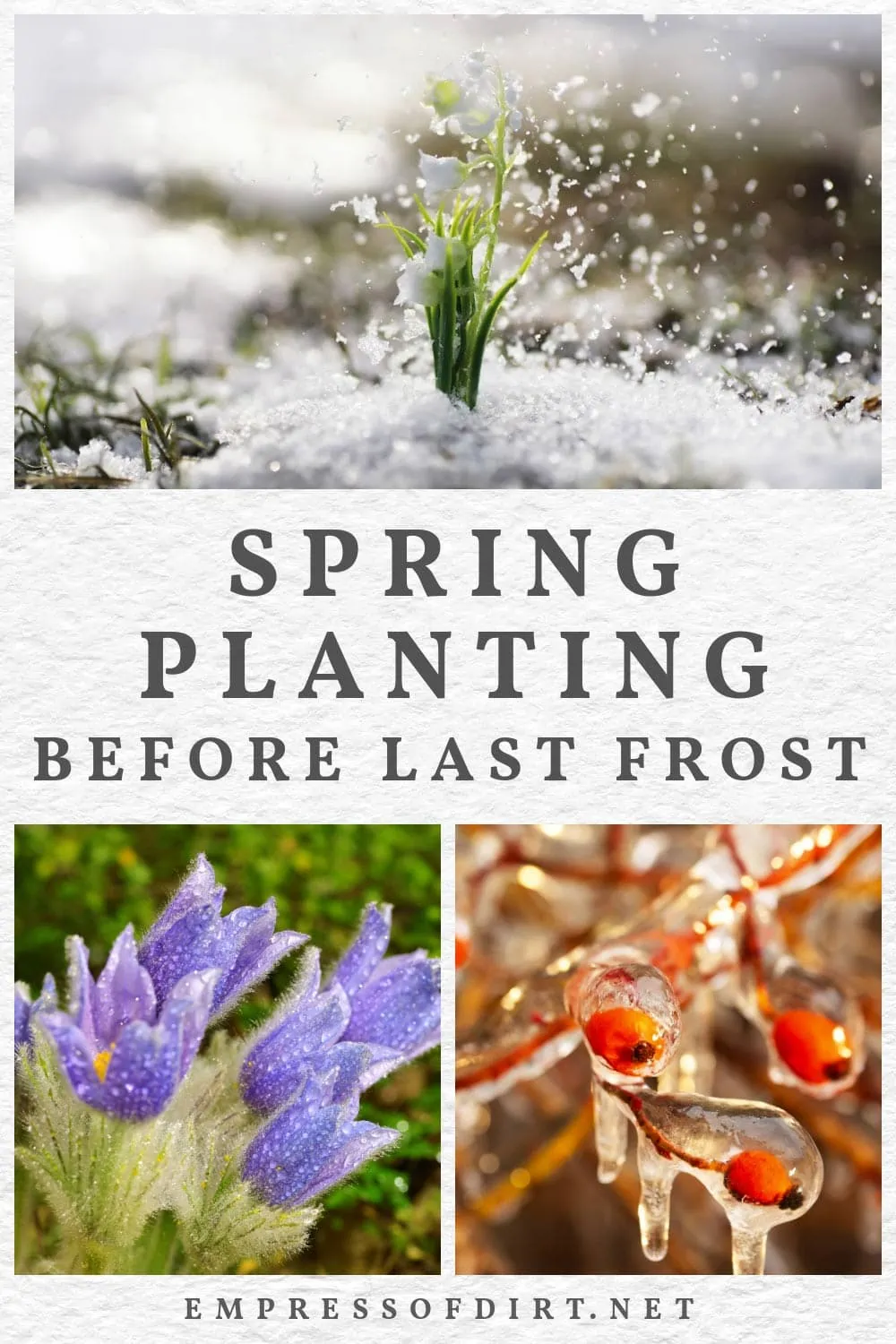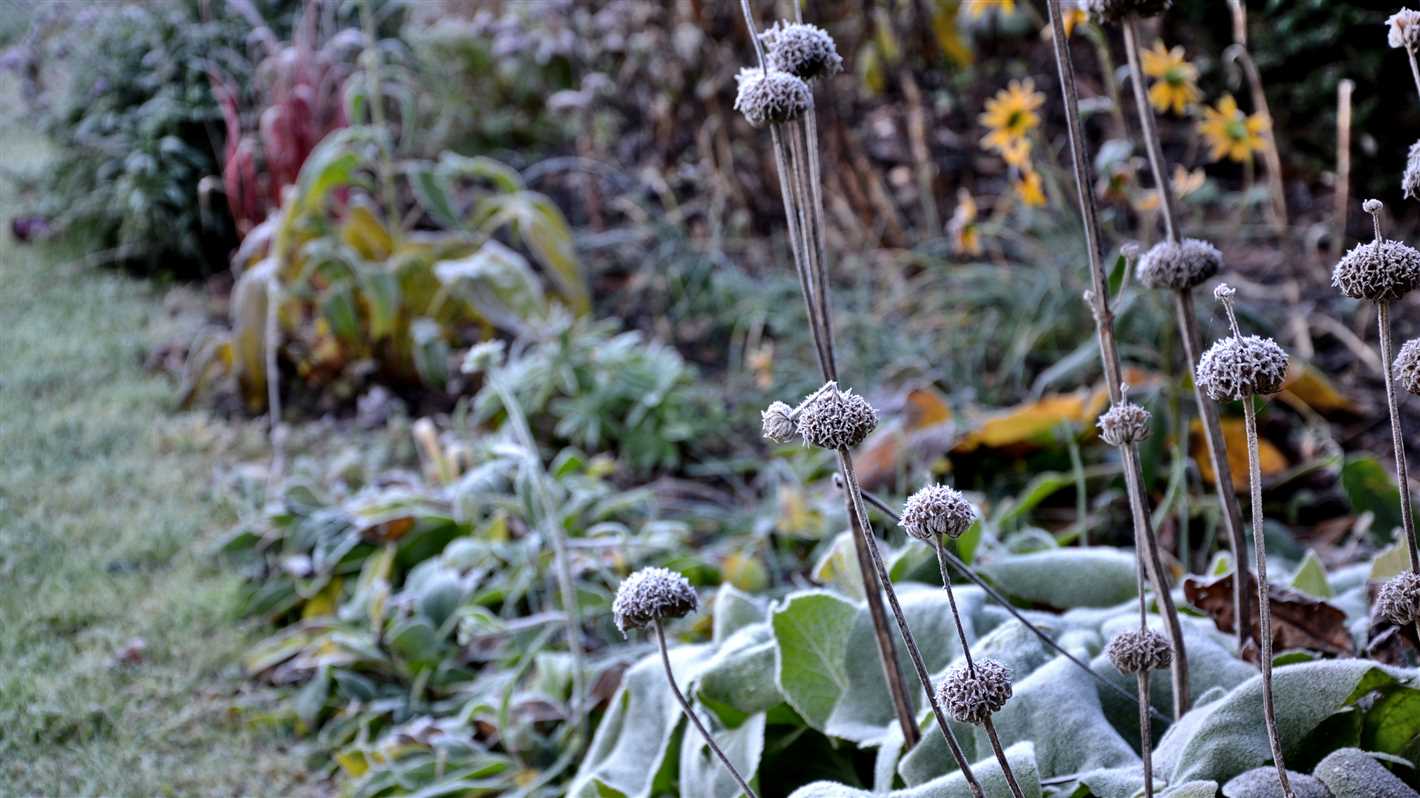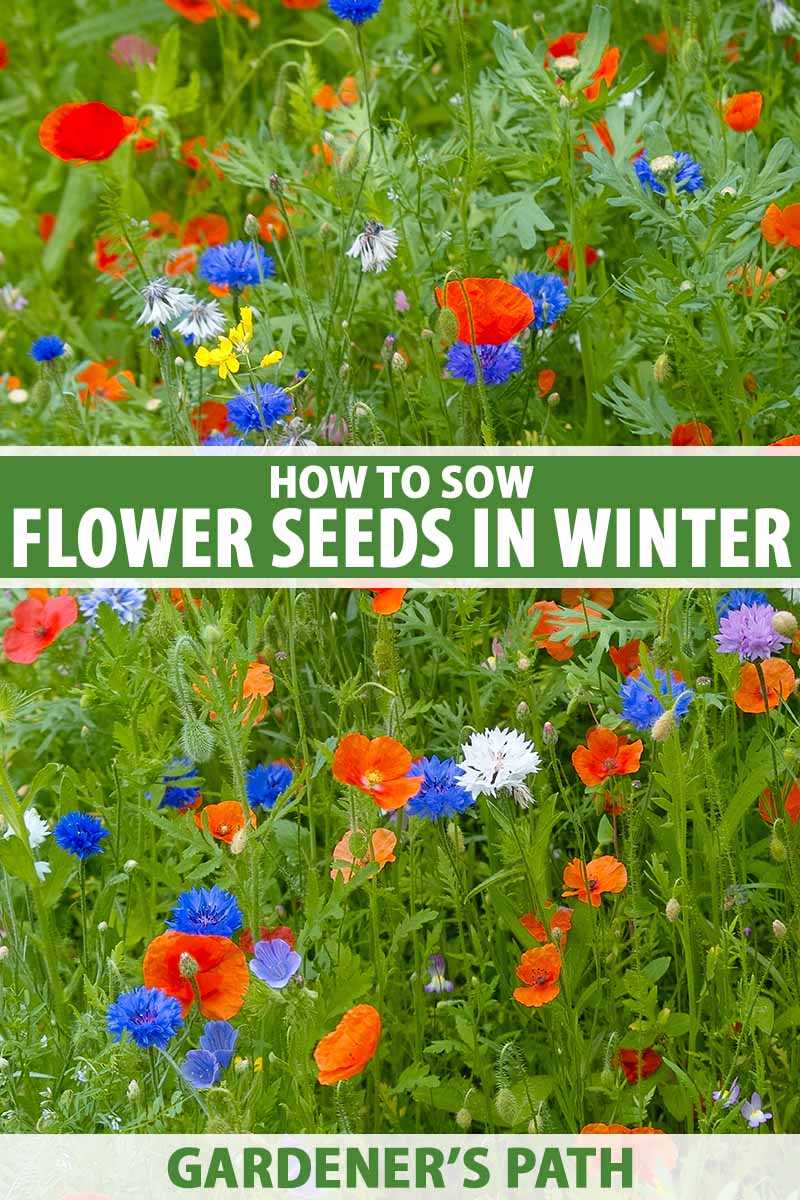- How to Protect Seedlings from Frost: 5 Essential Tips
- Choose the Right Growing Location
- Use Protective Covers
- Selecting the Right Cover
- Proper Application
- Conclusion
- Water the Seedlings Properly
- Create a Microclimate
- Here are some tips to create a microclimate:
- Keep an Eye on the Weather Forecast
- Takeaway
- References
- Question-answer:
- What are some ways to protect seedlings from frost?
- When should I start thinking about protecting seedlings from frost?
- How often should I water seedlings that are being protected from frost?
- Can I use plastic to protect seedlings from frost?
- What are some signs that seedlings have been damaged by frost?
- Are there any plants that are more susceptible to frost damage than others?
- Video: 3 Biggest Mistakes When Starting Seeds Indoors or Outdoors // How to Avoid or Fix Them!

With the arrival of spring, many gardeners eagerly start planting their seedlings, only to be caught off guard by a late frost. Frost can be devastating to young plants, causing damage or even death.
However, there are steps you can take to protect your seedlings and ensure their survival until warmer weather arrives. By following these tips, you can save your seedlings and give them the best chance at thriving in your garden.
1. Monitor the weather forecast: Keep a close eye on the weather forecast for your area. Look for nights when temperatures are expected to drop below freezing. This will give you a heads up to take action and protect your seedlings.
2. Harden off your seedlings: Before planting your seedlings outside, it’s important to gradually acclimate them to outdoor conditions. This process, known as hardening off, helps seedlings adjust to fluctuations in temperature and exposure to wind and sunlight. By slowly introducing your seedlings to outdoor conditions over the course of a week or two, they will become stronger and more resilient to frost.
3. Cover your seedlings: When frost threatens, cover your seedlings with a protective barrier. Use materials such as cloths, bedsheets, or even buckets to create a temporary shelter. Make sure the cover extends all the way to the ground and is securely anchored to prevent cold air from reaching the plants.
4. Use mulch: Applying mulch around your seedlings can help insulate the soil and protect the roots from frost. Organic mulch, such as straw or leaves, can also provide additional nutrients as it breaks down over time.
5. Water wisely: Proper watering is crucial for the health of your seedlings, especially during frosty periods. Water the soil around your seedlings thoroughly, but avoid overwatering, as this can lead to root rot. Moist soil can help retain heat and provide some protection against frost.
By implementing these tips, you can increase the chances of saving your seedlings in case of a late spring frost. With a little extra care and attention, your seedlings will be well-prepared to thrive in your garden once warmer weather arrives.
How to Protect Seedlings from Frost: 5 Essential Tips
1. Monitor the Weather
Keep a close eye on the weather forecast, especially during the spring season when frost is more likely to occur. By monitoring the weather, you will be able to anticipate any potential frost and take necessary action to protect your seedlings.
2. Use Row Covers
Row covers are an effective way to provide protection for seedlings against frost. These protective covers can be made from lightweight fabric or plastic and should be placed over the seedlings, creating a barrier between them and the cold air. Make sure to secure the covers firmly to prevent them from blowing away in strong winds.
3. Mulch Around Seedlings
Applying a layer of mulch around the base of the seedlings can help to insulate the soil and protect the roots from freezing temperatures. Organic materials such as straw or shredded leaves make excellent mulch options, as they provide insulation while also allowing air and water to reach the roots.
4. Water the Seedlings
Watering the seedlings before a frost event can help to protect them. Moist soil retains heat better than dry soil, so watering the seedlings a day or two before the frost is expected can help to insulate their roots and keep them warm. Avoid watering the seedlings too close to the frost event, as wet foliage can be more susceptible to damage.
5. Provide Extra Heat
In extreme cases, when the temperature is expected to drop significantly, you can consider providing extra heat to the seedlings. This can be done using heat lamps, mini greenhouses, or even by placing plastic bottles filled with warm water near the seedlings. The extra heat will create a microclimate around the seedlings, keeping them protected from frost.
By following these essential tips, you can ensure the survival of your seedlings during frosty conditions and give them a better chance of thriving when spring arrives.
Choose the Right Growing Location
Choosing the right growing location for your seedlings is essential in ensuring their survival until spring. Here are some tips to help you make the right choice:
- Consider the sunlight: Before planting your seedlings, observe the amount of sunlight different areas of your garden receive throughout the day. Most seedlings require at least 6-8 hours of direct sunlight, so choose a location that provides this amount of sun exposure.
- Check for protection: Look for a spot in your garden that offers some natural protection from harsh winds and cold temperatures. This could be a sheltered area near a fence or wall, or a spot with some overhead coverage from trees or other structures.
- Ensure proper drainage: Seedlings are vulnerable to rot and other diseases caused by excess moisture. Make sure the chosen location has good drainage to prevent waterlogging. Avoid areas that are prone to pooling water after rain or snowfall.
- Consider proximity to water: Choosing a location near a water source will make it easier to water your seedlings regularly. This is especially important during dry or drought periods when your seedlings may require more frequent watering.
By carefully selecting the right growing location for your seedlings, you can improve their chances of surviving the winter and thriving until spring arrives.
Use Protective Covers
One effective way to save seedlings from frost damage is to use protective covers. These covers can provide a barrier against the cold temperatures and help insulate the delicate plants.
Selecting the Right Cover
When choosing a protective cover, it’s important to select one that is suitable for the size and type of seedling you are trying to protect. Depending on the severity of the frost, you may need a cover that offers more or less insulation.
There are various options available for protective covers, including:
- Frost blankets or row covers: These lightweight covers are made from breathable fabric and can be draped over the seedlings. They allow sunlight, air, and water to reach the plants while providing some insulation.
- Cloches: These are individual covers that can be placed over individual seedlings or small groups of plants. They are usually made of glass or plastic and create a mini greenhouse effect, trapping heat and protecting the plants.
- Plastic sheets or tarps: These can be used to cover larger areas or entire beds of seedlings. They provide a more substantial barrier against the cold.
Proper Application
When using protective covers, it’s important to ensure they are properly applied to maximize their effectiveness:
- Secure the covers: Use stakes, rocks, or other weights to hold the covers in place and prevent them from blowing away in the wind.
- Leave room for growth: Make sure the covers are not too tight around the seedlings to allow for growth and prevent damage to the plants.
- Remove during the day: If the temperatures rise above freezing during the day, it’s important to remove the covers to allow the seedlings to receive sunlight and air.
- Monitor moisture levels: Check regularly to ensure the seedlings are not becoming too dry or too wet under the covers. Adjust watering as needed.
Conclusion


Using protective covers is an effective way to save seedlings from frost damage. By selecting the right cover, properly applying it, and monitoring the moisture levels, you can give your seedlings the best chance of surviving until spring.
Water the Seedlings Properly
Properly watering your seedlings is essential to their survival during winter and in case of frost. Here are some tips to help you water them properly:
- Monitor the soil moisture: Check the moisture level of the soil regularly. The top layer of the soil should feel moist but not overly wet. It’s important to strike a balance to avoid either under or over watering the seedlings.
- Water deeply: When you water, make sure to irrigate the soil deeply, allowing the water to reach the roots. Shallow watering may result in shallow root growth, which can make the seedlings more susceptible to frost damage.
- Water in the morning: It’s best to water your seedlings in the morning. This allows any excess moisture on the leaves to dry off during the day, reducing the risk of fungal or bacterial diseases.
- Avoid watering at night: Avoid watering your seedlings in the evening or at night. Moisture on the leaves during cooler temperatures can increase the chances of frost damage. Additionally, wet leaves during the night can attract pests.
- Use a watering can or hose with a gentle spray: When watering your seedlings, use a watering can or a hose with a gentle spray attachment to avoid damaging the delicate plants. A soft showering effect will distribute the water evenly without disturbing the soil or the seedlings.
By following these watering tips, you’ll provide your seedlings with the proper amount of moisture they need to survive the winter and any unexpected frost. It’s important to maintain a healthy watering routine to ensure the seedlings’ growth and resilience.
Create a Microclimate
One effective way to protect your seedlings from frost is to create a microclimate around them. A microclimate is a small area where the climate conditions differ from the surrounding area, giving your seedlings a better chance of survival.
Here are some tips to create a microclimate:
- Choose the right location: Find a spot in your garden that is naturally sheltered from wind and provides some shade. This could be against a wall, near a fence, or under the canopy of a tree. Avoid areas that are prone to frost pockets or strong winds.
- Use mulch: Apply a layer of organic mulch around your seedlings to insulate the soil and protect them from temperature fluctuations. This will help retain moisture and regulate the temperature, creating a more favorable microclimate.
- Provide cover: Use row covers or cloches to create a protective barrier around your seedlings. These covers can be made of plastic, fabric, or even old milk jugs with the bottom cut off. Make sure the covers are securely anchored to prevent them from blowing away in strong winds.
- Utilize water: Watering your seedlings before a frost can help protect them. The moisture in the soil will release heat as it evaporates, keeping the surrounding air slightly warmer. Be careful not to overwater, as this can lead to root rot.
- Create a mini greenhouse: If you have larger seedlings or potted plants, consider creating a mini greenhouse. This can be done by placing a transparent plastic bag or a plastic container over the plants. Just make sure to remove the cover during the day to prevent overheating.
By creating a microclimate, you can give your seedlings a better chance of surviving frost and extending their growing season. Remember to monitor the weather conditions and adjust the protection as needed.
Keep an Eye on the Weather Forecast
When it comes to protecting your seedlings from frost, staying informed about the weather forecast is crucial. By keeping an eye on the upcoming weather conditions, you can prepare and take necessary measures to shield your delicate seedlings from freezing temperatures.
Here are some tips on how to monitor the weather forecast:
- Check local weather websites: Various websites offer accurate and up-to-date weather information for specific locations. Make sure to bookmark a reliable weather website and regularly check for any frost warnings or significant temperature drops in your area.
- Use a weather app: Install a weather app on your smartphone that provides hourly and daily forecasts. This way, you can easily access the latest weather updates on the go.
- Tune in to weather reports: Listen or watch local news channels or radio stations that provide weather updates and forecasts. These reports can give you valuable insights into upcoming temperature changes and potential frost threats.
- Subscribe to weather alerts: Sign up for weather alert services, such as text message alerts or email notifications, offered by meteorological organizations or local authorities. These alerts can give you advance notice of any frost warnings in your area.
By staying vigilant and monitoring the weather forecast, you can proactively protect your seedlings from the damaging effects of frost. Remember, prevention is key, so be prepared to take action when frost is expected.
Takeaway
Protecting your seedlings from frost during the winter months is crucial for their survival. By following these tips, you can ensure that your seedlings stay healthy and strong until spring:
- Plan ahead: Check the local weather forecast regularly and be prepared for frosty nights.
- Choose the right location: Find a sheltered spot with good drainage for your seedlings.
- Provide insulation: Cover your seedlings with frost blankets or row covers to protect them from extreme temperatures.
- Water wisely: Water your seedlings early in the day to avoid moisture loss and damage from freezing temperatures.
- Monitor regularly: Keep an eye on your seedlings and remove any damaged or diseased plants promptly.
By implementing these strategies, you can give your seedlings the best chance of surviving the winter frost and thriving when warm spring weather arrives.
References


- Gardeners’ World. (2021). How to overwinter seedlings. Retrieved from https://www.gardenersworld.com/how-to/sow-seeds/how-to-overwinter-seedlings/
- Fine Gardening. (n.d.). Overwintering Seedlings. Retrieved from https://www.finegardening.com/article/overwintering-seedlings
- Royal Horticultural Society. (2021). Seeds to sow in September. Retrieved from https://www.rhs.org.uk/advice/profile?PID=951
- The Old Farmer’s Almanac. (n.d.). Frost Dates Calculator. Retrieved from https://www.almanac.com/content/frost-chart-united-states
- Purdue Extension. (n.d.). Outdoor Frost Protection of Vegetables. Retrieved from https://www.purdue.edu/hla/sites/yardandgarden/outdoor-frost-protection-of-vegetables/
Question-answer:
What are some ways to protect seedlings from frost?
There are several ways to protect seedlings from frost. One method is to cover them with a layer of mulch or straw, which helps to insulate the soil and retain heat. Another option is to use cloches or row covers to create a barrier between the seedlings and the cold air. Additionally, you can bring the seedlings indoors overnight or during periods of frost to protect them from freezing temperatures.
When should I start thinking about protecting seedlings from frost?
It’s important to start thinking about protecting seedlings from frost before the first frost of the season is expected. This can vary depending on your location, but in general, it’s a good idea to start preparing for frost protection in the late summer or early fall. By planning ahead, you can ensure that your seedlings are protected and have a better chance of surviving until spring.
How often should I water seedlings that are being protected from frost?
The frequency of watering seedlings that are being protected from frost will depend on several factors, including the type of plant and the weather conditions. In general, it’s important to keep the soil moist but not waterlogged. As a guideline, you can check the soil moisture by sticking your finger about an inch into the soil. If it feels dry at this depth, it’s time to water. However, be careful not to overwater, as this can lead to root rot and other problems.
Can I use plastic to protect seedlings from frost?
Yes, you can use plastic to protect seedlings from frost. Plastic can help to create a barrier between the seedlings and the cold air, trapping in heat and preventing frost damage. There are several types of plastic that can be used, including plastic sheeting, plastic cloches, or plastic row covers. Just make sure to secure the plastic so that it doesn’t blow away in the wind, and remove it during the day to allow for air circulation.
What are some signs that seedlings have been damaged by frost?
Some signs that seedlings have been damaged by frost include wilting, browning or blackening of leaves, and stunted growth. If you notice any of these signs, it’s important to take action as soon as possible to protect the seedlings and prevent further damage. You can try covering them with a layer of mulch or straw, bringing them indoors, or using other methods of frost protection.
Are there any plants that are more susceptible to frost damage than others?
Yes, some plants are more susceptible to frost damage than others. Tender plants, such as tomatoes, peppers, and basil, are particularly vulnerable to frost and should be protected accordingly. On the other hand, some plants, like kale, spinach, and lettuce, are more tolerant of cold temperatures and may not require as much protection. It’s a good idea to research the specific needs of the plants you are growing to determine the best methods of frost protection.







